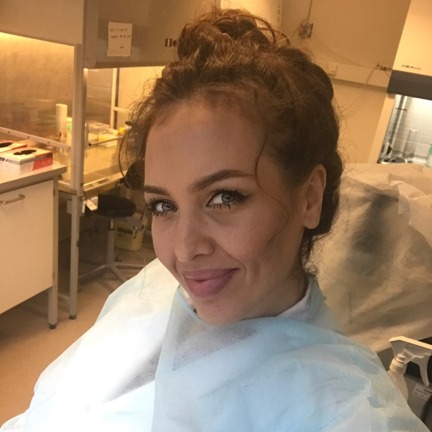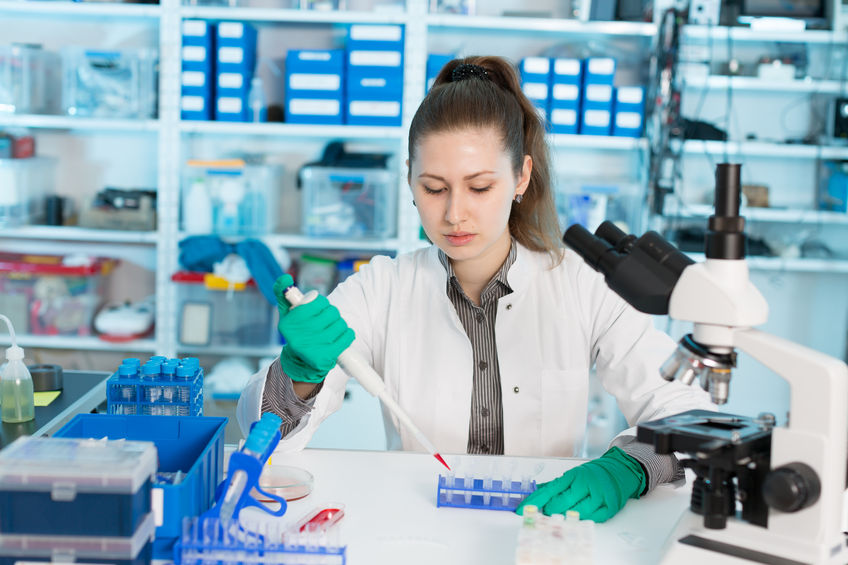Even though pipettes are members of the precision-instruments group, their preciseness is not to be taken for granted—and largely depends on each scientist’s individual skills. Pipetting might be the last thing you worry about when you approach that lab bench and start your experiment, but it is crucial for reproducibility because without the proper accuracy, there is no point in conducting assays. In order to assure your data integrity, here are some useful tips and tricks of the trade:
- Choose the proper pipette: Most of you likely work with air-displacement pipettes. There is nothing wrong with that approach—they are, indeed, highly accurate and used for standard pipetting applications. A few physical factors such as altitude, temperature, and density of liquid can influence pipetting accuracy—even if your pipetting technique is perfect—and that is something you should keep in mind. The most important factor is temperature. If there is a difference between the temperature of the liquid you are pipetting and the room you are in, the volume you wish to aspirate will not be the same as the pipette says. So take your time and heat your liquids properly. Positive-displacement pipettes are more accurate because they don’t have an air cushion inside, which can be affected by temperature and pressure. Instead, they have a unit comprised of a barrel and a tip, which are both dispensed when pipetting. As a result, they are used only in certain occasions, as this characteristic makes them more expensive. They are more suitable for work with volatile reagents and are mostly used for amplifying techniques, such as PCR.
- Clean it up: Make sure your pipette is clean by wiping it with 70% ethanol before use.
- Eliminate that troubling temperature factor: If your liquid is colder than the room temperature, the first aspirated volume will be larger than expected. When working with warmer samples, the volume will be smaller. Interestingly, all subsequent volumes would be accurate if using the same tip. The solution is simply to pipette up and down a couple of times, empty the pipette tip, and then aspirate your desired volume.
- Work with the proper mode: Use the standard rather than reverse pipetting mode when pipetting aqueous solutions, and the opposite when working with viscous materials. Reverse mode implies pressing the pipette past the first stop, aspirating the sample, and then pressing the plunger until the first stop. With aqueous solutions, this will result in over-delivery, just as standard mode will result in under-delivery of viscous samples.
- Pause: I always pause for a second after aspirating my sample and before taking out the pipette. This ensures that the liquid received the needed time to move up the tip.
- 90°/45°: Remember to aspirate at 90° and dispense at 45°. These angles have been proven in test accuracy.
- Put it down! When you’re not pipetting, put your pipette aside. Holding it in your hand causes heat transfer, which subsequently affects your measurements.
- Pre-wet the tip: Pre-wetting the pipette tip is an important and very commonly overlooked factor that can influence your accuracy and data integrity. Pre-wetting has multifold advantages, such as preventing cross-contamination by flushing out any residual substances or increasing the humidity within the tip, thereby reducing the amount of sample evaporation. Pipetting several samples without pre-wetting results in lower volume for the first few samples. So aspirate and eject your sample 2-3 times before aspirating for the actual delivery.
- Test yourself: More often than not, users are confident about their pipetting technique. Nevertheless, it won’t harm you to conduct a little experiment on yourself. Take a 100 µL of distilled water and dispense it into a tared container on a balance. The number on the analytical balance should be around 0.1 g. In the case that the mass is different than expected, you can calculate actual pipetted volume by using the following formula: volume = mass/density. As you all know, the density of aqueous solutions is 1. Repeat the same procedure 10 times and record the masses you acquire. If the variation is more than +/- 0.5%, then you have some practicing to do!
Techniques among pipette users vary greatly depending on their background and training. It is something that is often overlooked and somewhat taken for granted. Rarely is any scientist a sole executor of a particular experiment, so these variations can influence overall results. By improving our technique, we improve accuracy and secure data integrity. And remember, even the most experienced users can make room for improvements!
Quartzy is the world’s No. 1 lab management platform. We help scientists easily organize orders, manage inventory, and save money. We’re free and always will be. Visit Quartzy.com or reach out at info@quartzy.com.
Interested in writing for The Q? Send us an email!
Share this:

Tatjana Bosnjak
Tatjana is a PhD Candidate at the Department of Pharmaceutical Biosciences, University of Oslo, Norway. She is interested in how different drugs and substances affect our body, i.e. pharmacology. She studies proteolytic enzymes with a particular focus on cysteine proteases (legumain, cathepsins) and what roles these enzymes have in normal physiology and in diseases such as cancer, atherosclerosis and osteoporosis. Currently, her main goal is to illuminate the cellular and molecular mechanisms of legumain and cysteine cathepsins in bone remodeling and bone cell functions under physiological and pathological conditions of bone loss and to utilize them as potential pharmacological target molecules.
